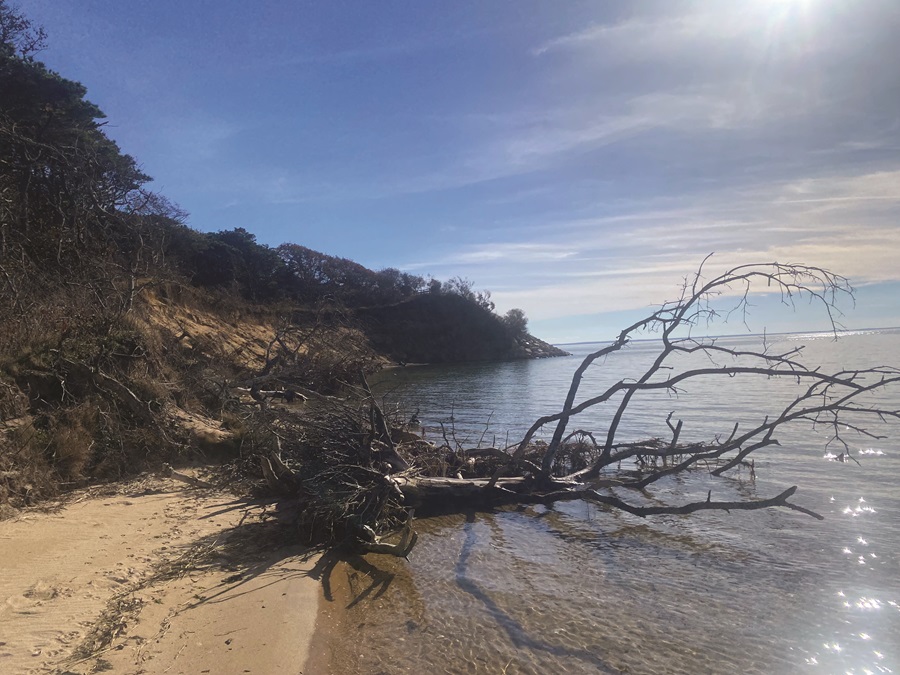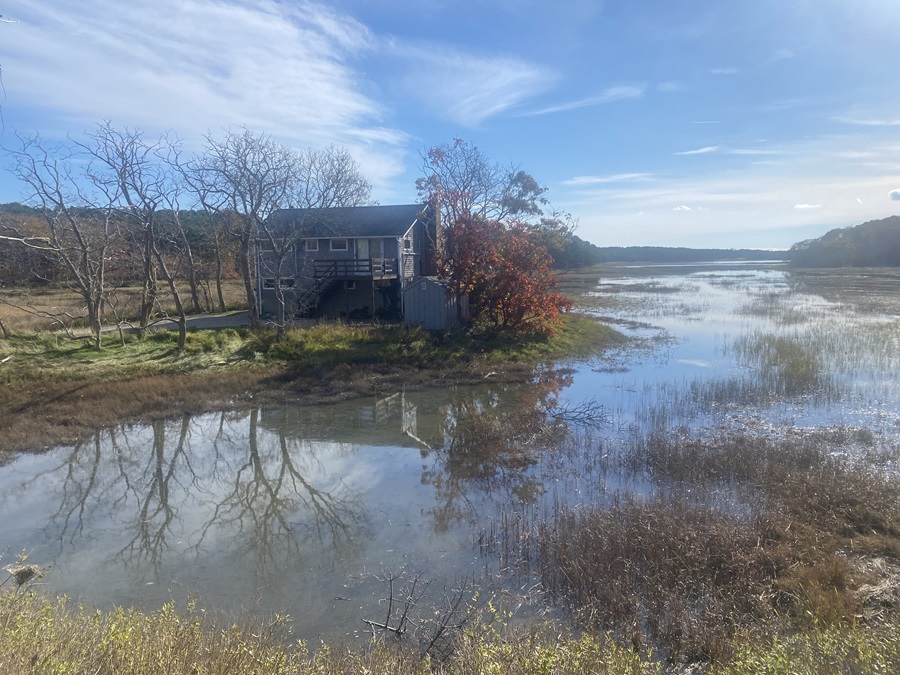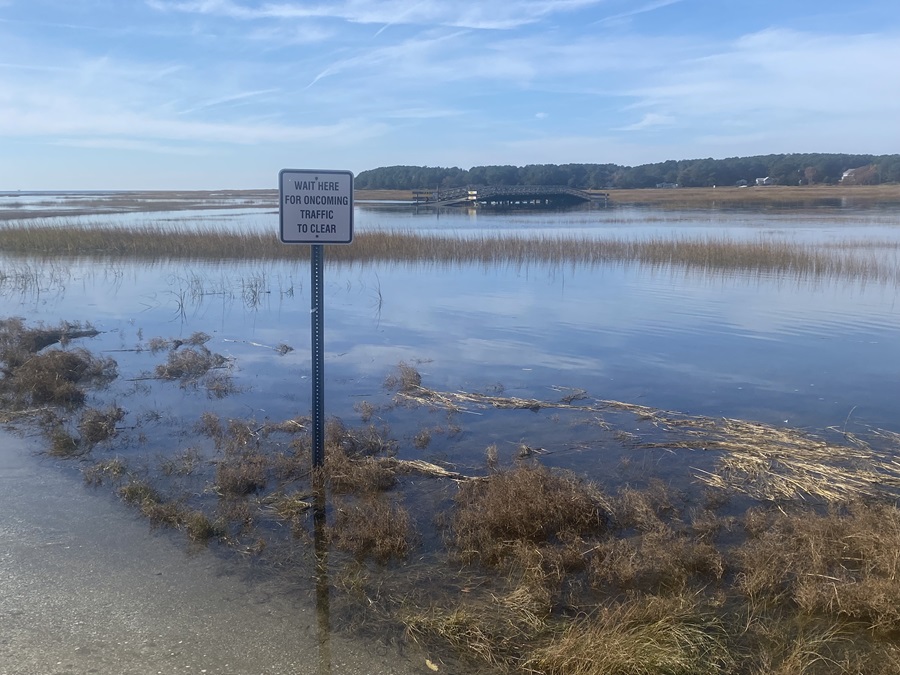If you scrunch your eyes enough to blur your vision slightly, it’s easy to imagine what Wellfleet or Provincetown looked like 50 or even 100 years ago, when horse-drawn buggies roamed the main streets.
The mighty elms are gone but, remarkably, much of the towns’ 18th- and 19th-century architecture remains, still evocative of bygone times. It’s telling that despite overwhelming changes in the local economy and culture so much about our physical surroundings is unchanged. We are deeply attached to the past here.
But regarding changes in the natural world, the opposite may be true. A Cape Codder from circa 1900 might easily recognize the house he once lived in, but I have my doubts he would be able to recognize the shore nearby or the inhabitants of the ocean beyond.

Just as the Cape’s economy and culture have undergone consequential shifts over the last century, the same has happened to the sea and its once-flourishing marine life. For many of us, though, the extent and significance of those changes are less than obvious.
When I first moved back to Wellfleet in 2015 after retiring from a career that had taken me to Puerto Rico, Rhode Island, Florida, and Washington state, one of my first stops was the Lighthouse Restaurant. I hadn’t been there since the 1970s, when, as editor of the Wellfleet Advocate, I had made the place a part of my daily routine. We called the Lighthouse “the real town hall” because, despite the new Open Meeting Law, for all practical purposes the business of the town was still being conducted there, informally, over endless cups of coffee and plates of bacon and eggs.
Halfway through my first beer, the opinionated, affable Joe Wanco, who I was glad to see still owned the place, took a seat beside me. “You’re Jim Gilbert,” he said. A conversation followed that lasted several more beers. At one point, I brought up climate change.
“I just don’t see it,” Wanco said. “Yeah, it’s a little warmer these days, but we’ve always had beach erosion and fish that come and go. I’ve been living here for 40 years. I look for climate change, but I’ve never seen what everyone’s talking about.”
I remembered a study I had read about how it is that incremental changes in the environment such as sea level rise and climbing ocean temperatures go unrecognized. The study was first published in 1995 by a fisheries biologist at the University of British Columbia in Vancouver named Daniel Pauly. His theory is called the “shifting baseline syndrome.” In Vanishing Fish: Shifting Baselines and the Future of Global Fisheries (2019), he describes the declining arc of the fishing industry.
Pauly’s theory attributes that decline to our loss of historic knowledge about the natural world. Not even scientists, he argues, realized the magnitude of changes happening in marine systems because they focused too much on the present and not enough on the past.

Pauly describes fisheries managers setting quotas based on annual harvests at the same time that technological advances were improving fish landings. That allowed limits to rise while species’ populations were actually crashing.
Taking his observations a step further, the point becomes that our inability to manage climate change is based on the natural human inclination to gauge the status of our natural surroundings through the cloudy lens of our own observations.
What’s affected is not only our understanding of nature but also our tolerance of change. If we go by our parents’ or even our grandparents’ experiences of coastal erosion, for example, we can believe we are within an endurable degree of change, and thus we don’t perceive that change as truly threatening.
Here, shifting baselines has affected people’s tolerance of gray seals. The seal population has risen dramatically enough in recent years to foster calls to “cull the herd” to protect the striped bass and counter the presence of great white sharks in our waters.
But our understanding shifts once we realize that our belief that the baseline number of seals should be very low is the result of aggressive bounties first enacted in Massachusetts in 1888. Since the $5-a-nose bounty ended in 1962, the gray seal population has rebounded from virtually zero to the estimated 50,000-plus around today.
Likewise, any disposition to “manage” great white sharks shifts when you know that the global population of all sharks is down more than 70 percent since 1970, according to a study tracking a half-century of their decline published in Nature in 2021. In that same year, a reassessment of critically endangered species published in Current Biology found that a third of all shark, ray, and chimaera species are at risk of extinction because of habitat loss and overfishing.
Some environmental changes happen at barely noticeable speeds. Take ocean acidification, which is directly linked to increased levels of carbon dioxide in the atmosphere. When it dissolves in the ocean, CO2 is transformed into carbonic acid, bringing the water’s pH down. Since the Industrial Revolution, the ocean’s average surface seawater pH has dropped from 8.15 to 8.05. According to the EPA, that’s as high as it’s been in the last two million years. If an increase of one tenth in value doesn’t sound like a lot, remember that the pH scale is logarithmic, so this change represents approximately a 30-percent increase in acidity.

When seawater reaches the point of acidity, extraordinary changes will begin taking place because pH affects plants, plankton, coral, and fish. Cold-water locations like New England are particularly vulnerable to acidification. That’s because cold water more readily absorbs carbon dioxide. Here on Cape Cod, higher seawater acidity would prevent our beloved shellfish and crustaceans from growing strong, healthy shells and exoskeletons.
But how can anyone besides dedicated scientists keep these kinds of environmental scorecards? It’s not surprising that even folks living surrounded by the sea are unable to see climate changes, or even if they do, to appreciate their real import.
I want to suggest that those of us living on this shifting sandbar called Cape Cod are particularly well positioned to notice these changes and work against them.
We like knowing that this peninsula came into view only 18,000 years ago or so — a mere wink in geological time — when the glacial moraine scraped past. We love seeing old photos of rolling, treeless dunes, imagining what life was like when ice was harvested from local ponds each winter, and picturing how a now-landlocked spot like Moby Dick’s on Route 6 was a functioning fishing boat dock, or how now-shallow estuaries like Pamet Harbor was once a thriving shipbuilding center that launched 100-foot deep-draft schooners that were the envy of the trading and fishing world.
We, of all people, living where a sea level rise of inches will result in more houses lost to the sea, should be wary about seemingly minor changes in our environment. Pauly’s theory is a reminder that the history of this place is just as important as what we can see with our own eyes — more so as the ocean laps at our “erosion-preventing” seawalls.
It means something that our favorite beaches from Herring Cove to Corn Hill to Newcomb Hollow are now nonexistent at just about every high tide, or that equinox and solstice tides now seem to come twice a month. We are not all scientists, but we can all be fully responsible witnesses to our changing world.



